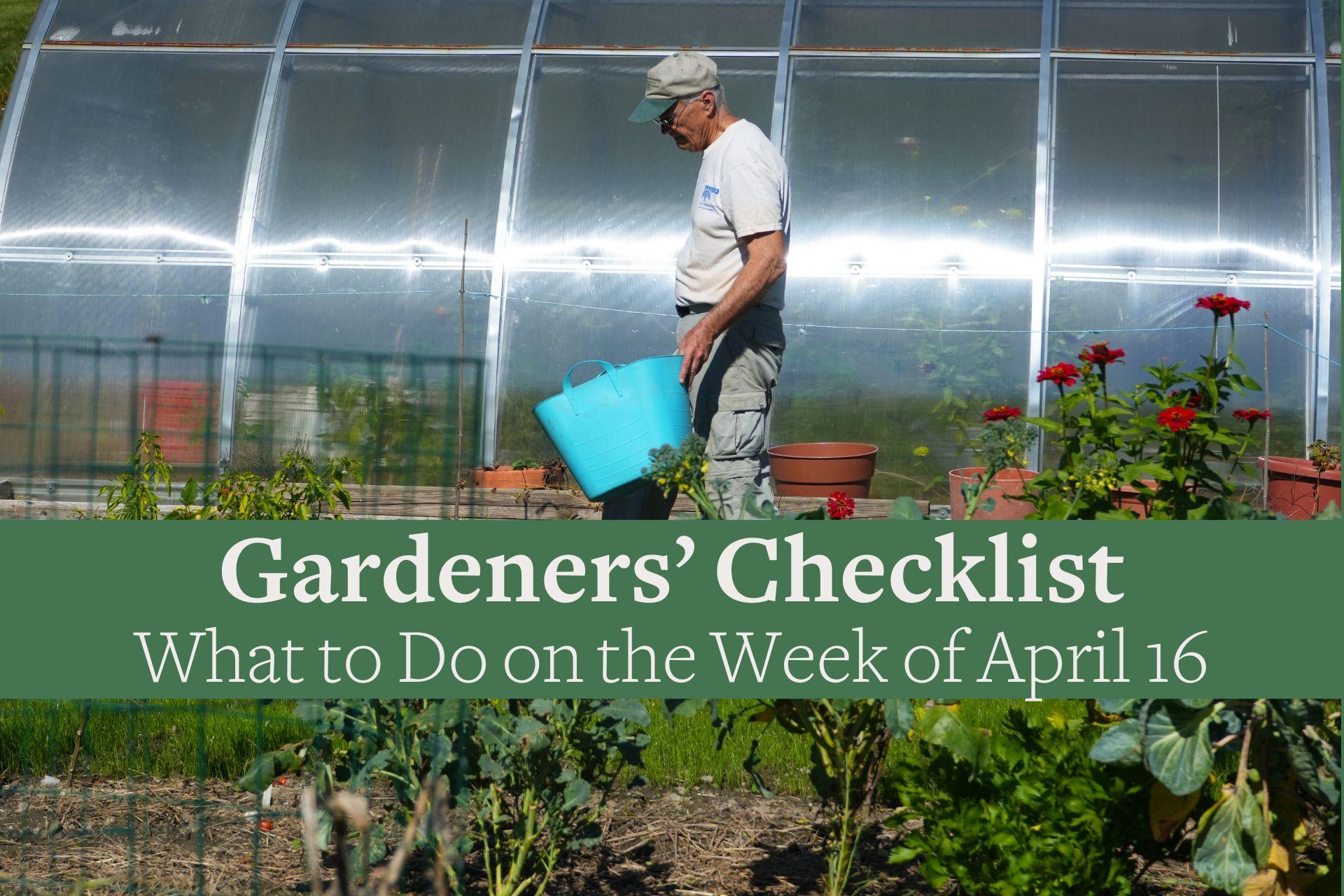You are here
Gardeners Checklist: Here Is What to Do on the Week of April 16
Gardeners Checklist: Here Is What to Do on the Week of April 16
By Ron Kujawski
• Cut some daffodils for a table arrangement at Sunday dinner. For longer-lasting flowers, cut only those that are just about to open or have just opened. Adding a floral preservative to water in the vase will also extend the life of the cut flowers.
• Wash pots and flats before transplanting seedlings to them. Wash these containers in warm soapy water, rinse in clear water, and when dry, spray the inside wall and rim of the pots with vinegar. Why go through all this trouble? Unwashed pots can harbor fungi that cause damping off, a disease that attacks seedling stems. As an alternative to vinegar, use household bleach (1 part bleach in nine parts water) – on your pots, NOT in your salad dressing!
• Save space in the vegetable garden by interplanting fast-growing vegetables within rows with slow growers, or in alternating rows of slow and fast growers. Some good combinations to plant now are radishes with beets, radishes with carrots, and spinach or leaf lettuce with onions.
• Plant new shrubs in the landscape now. I prefer shrubs with multi-season appeal. One of my favorites is fothergilla, native to the southern Appalachians but hardy in this area. In spring, fothergilla produces cream or pale-yellow spikes of flowers with a spicy fragrance. In summer, fothergilla stands out as a dense shrub with leathery blue-green leaves. In the fall, these leaves turn golden yellow with scarlet overtones.
• Watch for Eastern Tent Caterpillars. They should be hatching any day now and will begin devouring leaves and buds on cherry, crabapple, and apple trees. The safest control is to spray with the biological material, BT. However, this material is only effective when the caterpillars are very small. BT is short for Bacillus thuringiensis, but only the Bacillus cares.
• Prune roses just as the buds begin to break. With well-established roses, be sure to take out some of the oldest canes back to ground level.
• Start mowing lawns when the grass reaches a height of three inches. Cut back to two or two- and one-half inches. Cutting too low will interfere with the development of new roots.
I’ve often heard people comment that they prefer to grow perennial flowers rather than annuals since they require less work. Apparently, these people never bother to divide their perennials. With a few exceptions (e.g., peony, Baptisia, and Oriental poppy), most perennials need to be divided about every 3 or 4 years. With shoots of many perennials now poking through the ground, it’s time to divide those that are overcrowded, have a dead area in the middle of the crown, or have flowered poorly in recent years. For those who do not enjoy the pleasures of dividing perennials, there’s always golf.
Ron Kujawski began gardening at an early age on his family's onion farm in upstate New York. Although now retired, he spent most of his career teaching at the UMass Extension Service. He serves on Berkshire Botanical Garden’s Horticulture Advisory Committee. His book, Week-by-Week Vegetable Gardener’s Handbook, is available here.
Help Our Garden Grow!
Your donation helps us to educate and inspire visitors of all ages on the art and science of gardening and the preservation of our environment.
All donations are 100 percent tax deductible.



